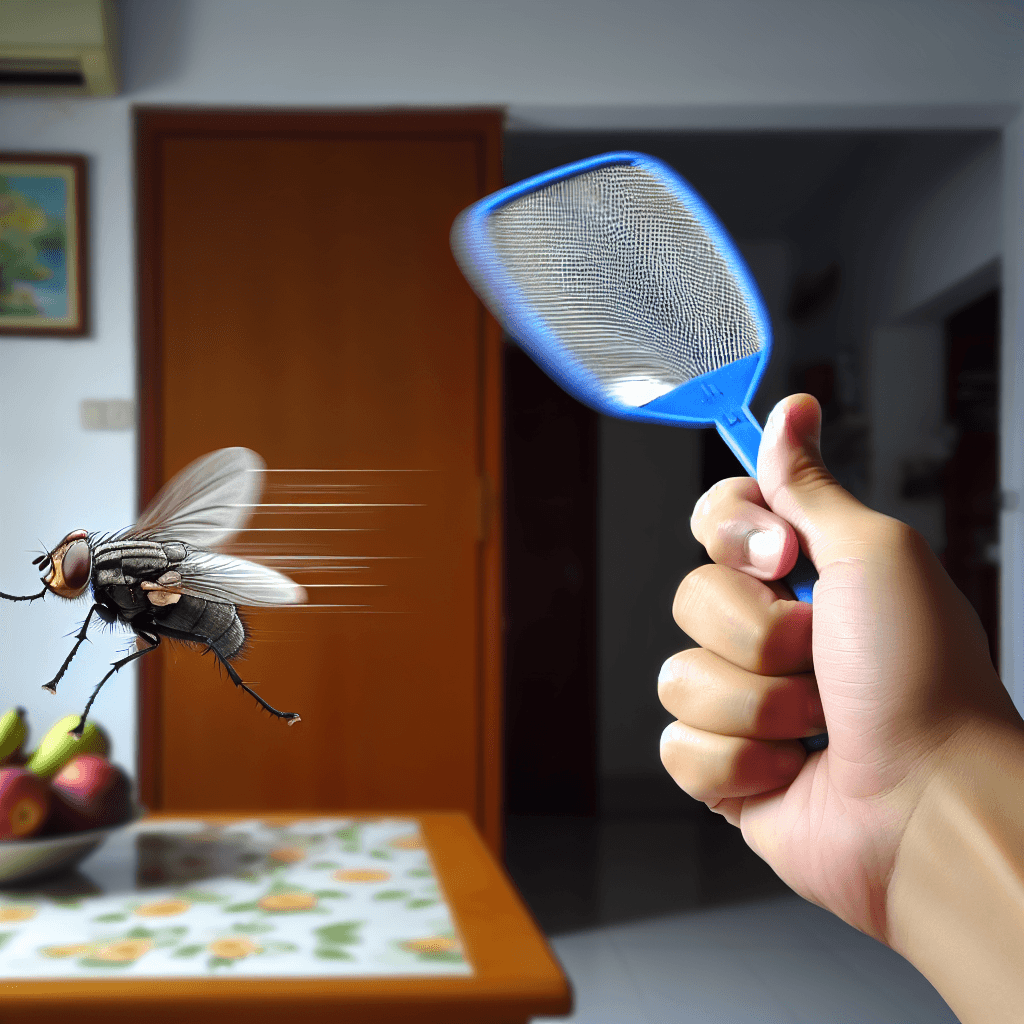Masters of Evasion: Why Are Houseflies So Incredibly Difficult to Swat Mid-Air
Ever wonder why swatting a housefly feels like an impossible task? It's not just luck; these tiny insects are equipped with sophisticated evasive abilities backed by fascinating science.


Too Long; Didn't Read
Houseflies are difficult to swat not because of luck, but because they have highly advanced biological systems that allow them to perceive threats and react with incredible speed and agility.
Masters of Evasion: Why Are Houseflies So Incredibly Difficult to Swat Mid-Air?
We've all been there: the persistent buzz, the frantic waving, the satisfying smack... hitting nothing but air. The common housefly, Musca domestica, seems almost supernatural in its ability to dodge our swatters and rolled-up newspapers. Is it just luck, or are these tiny insects equipped with some serious evasive technology? The frustration is real, but the science behind their agility is fascinating. This post delves into the biological marvels that explain why houseflies are so incredibly difficult to swat mid-air, revealing the complex systems behind their split-second escapes.
Seeing the World in Slow Motion: The Fly's Brain Power
One of the primary reasons flies are so elusive is their incredible visual processing speed. While humans perceive motion relatively smoothly, flies experience the world at a much faster frame rate. Research suggests a fly's brain can process visual information about four to six times faster than ours.
This high "flicker fusion frequency" means that to a fly, your incoming hand or swatter appears to be moving in slow motion. This gives them significantly more time to perceive the threat, calculate its trajectory, and initiate an escape maneuver long before you even complete your swing. They see the attack coming far sooner and with greater clarity than we might expect.
Eyes All Around: 360-Degree Threat Detection
A fly doesn't need to turn its head to see you coming. Its two large compound eyes are marvels of natural engineering.
- Compound Structure: Each eye is made up of thousands of individual lenses (ommatidia), each pointing in a slightly different direction.
- Wide Field of View: This structure grants the fly nearly 360-degree vision. They can simultaneously see forwards, sideways, upwards, and even partially behind themselves.
This panoramic view means there are very few blind spots. An approaching threat is almost always within their field of vision, allowing for rapid detection from nearly any angle.
Tiny Gyroscopes and Agile Wings: Superior Flight Control
Detecting a threat is one thing; escaping it requires sophisticated flight mechanics. Flies possess several key adaptations for aerial agility:
- Halteres: Flies have only one pair of functional wings for propulsion. Their hind wings have evolved into tiny, knob-like structures called halteres. These beat rapidly, acting like miniature gyroscopes. They provide instantaneous feedback on the fly's body orientation and rotation during flight, enabling incredibly stable flight and lightning-fast changes in direction – essential for dodging swats.
- Rapid Wing Beats: Housefly wings can beat up to 200 times per second. This high frequency allows for quick acceleration and complex aerial maneuvers that larger creatures (like humans) cannot easily track or intercept.
Calculating the Escape: Pre-Flight Planning
Perhaps most remarkably, flies don't just react instinctively; they plan their escape before even taking off. Studies, including notable research from institutions like Caltech, have shown that when a fly detects an approaching threat, its tiny brain performs rapid calculations.
Based on the perceived direction of the threat, the fly adjusts the position of its legs before jumping into the air. It pre-plans its takeoff trajectory to push off in the optimal direction – usually away from the incoming swat. This near-instantaneous calculation and leg repositioning sequence happens in fractions of a second, well before its wings even start beating for flight. They essentially anticipate your move and launch themselves onto the safest escape path.
Conclusion: More Than Just a Nuisance
So, the next time you find yourself flailing wildly at a seemingly invincible housefly, remember you're not just battling a simple insect. You're up against a creature with hyper-fast visual processing, near-panoramic vision, sophisticated gyroscopic flight control, and the ability to calculate escape trajectories before it even leaves the surface. These remarkable evolutionary adaptations combine to make the humble housefly a master of mid-air evasion. While their presence can be annoying, understanding the complex biology behind their elusiveness offers a new appreciation for these tiny, agile survivors.


